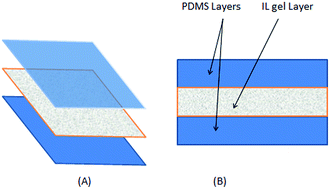Performance of butanol separation from ABE mixtures by pervaporation using silicone-coated ionic liquid gel membranes
Abstract
This work aims at the separation of n-butanol from aqueous solutions by means of pervaporation using membranes based on gelled ionic liquids (IL). These membranes were mechanically stabilized with a double silicone coating using two polydimethylsiloxane (PDMS) films. The first step of the membrane preparation considered the formation of a gelled ionic liquid layer, which was formed using two different imidazolium-based ionic liquids: [omim][Tf2N] and [bmim][Tf2N], and two different phosphonium-based ionic liquids: [P6,6,6,14][Tf2N] and [P6,6,6,14][DCA]. The gelation procedure was carried out on a porous paper support using a low molecular weight gelator. The membranes obtained from this method were tested in pervaporation assays to separate butanol from model ABE (Acetone–Butanol–Ethanol) fermentation solutions. These assays were done in an experimental setup especially built for this purpose. The pervaporation performance of these ionic liquid-based membranes was compared to that obtained with a single PDMS layer membrane. From these experimental results, butanol/water selectivity for [P6,6,6,14][Tf2N]-based membranes reached a value equal to 892, which is 150 times higher than the value obtained for a single PDMS layer membrane. Simultaneously, for the same IL, the transmembrane fluxes (kg h−1 m−2) of butanol and water were 37% and 99.6% lower than the values obtained using a single PDMS layer membrane, respectively. The hydrophobic character of the selected ionic liquid and its relatively high values for the transport parameters can explain this experimental response.

- This article is part of the themed collection: Celebrating Latin American Talent in Chemistry


 Please wait while we load your content...
Please wait while we load your content...